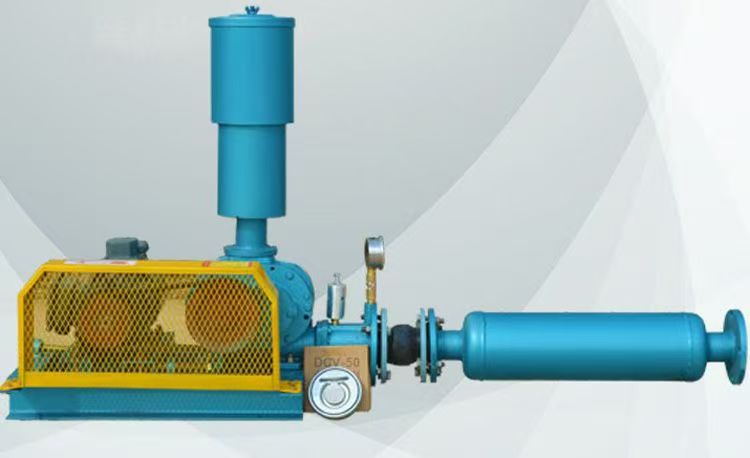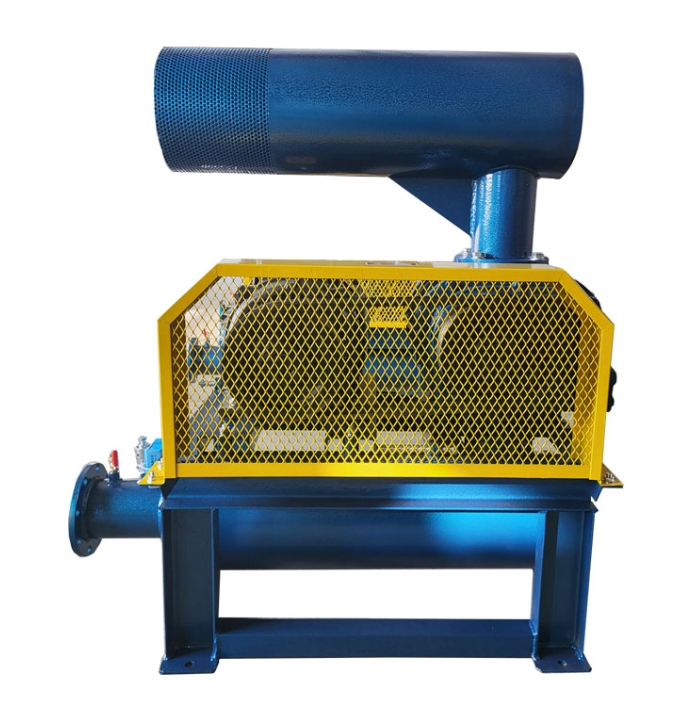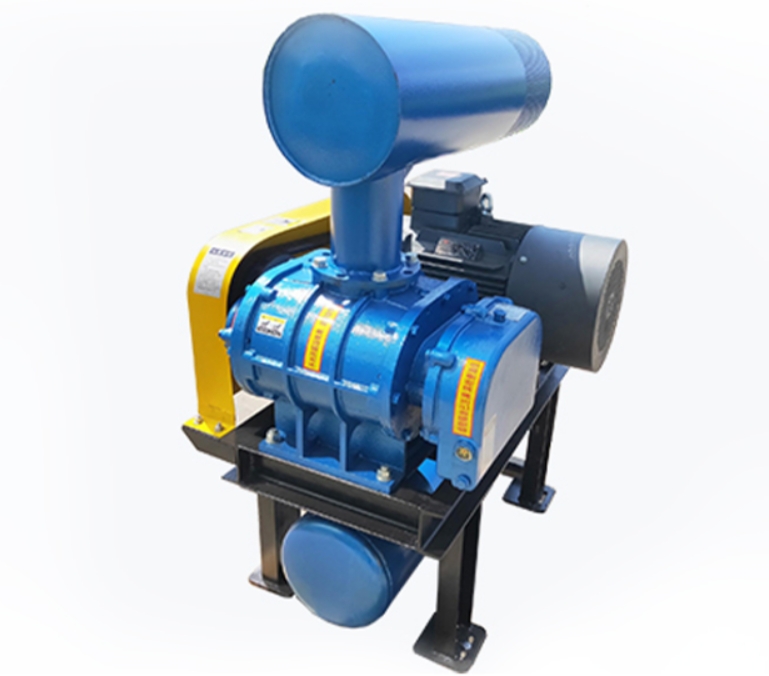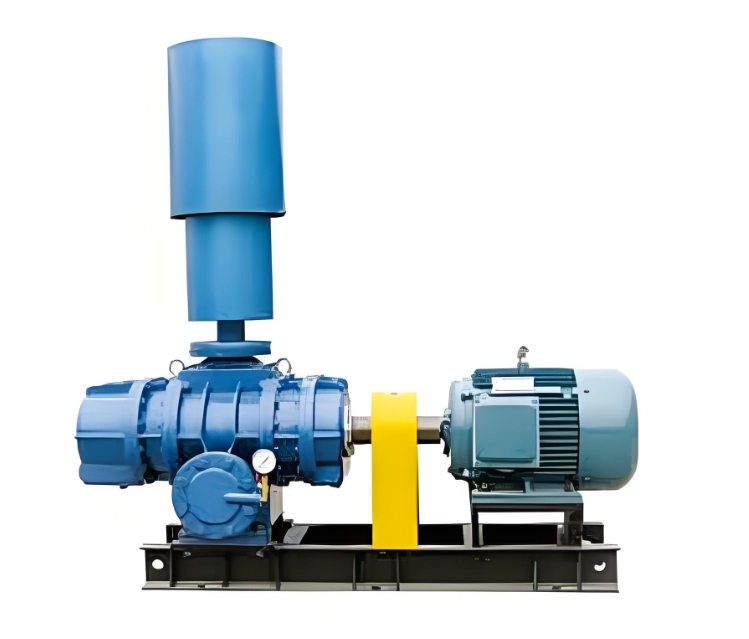Vacuum Roots blower

Vacuum Roots blower is an important industrial equipment with a wide range of application fields. The following is a detailed introduction to the vacuum type Roots blower:
1、 Working principle
The working principle of a vacuum Roots blower is mainly based on the relative motion of two blade rotors (usually three bladed impellers) in the cylinder to compress and transport gas. When the motor drives one of the rotors to rotate, the other rotor will rotate synchronously at the same speed and in the opposite direction through the action of the synchronous gear. During the rotation of the rotor, a vacuum state is formed at the intake port due to the gaps between the rotors and between the rotors and the cylinder, thereby sucking in gas. As the rotor continues to rotate, a sealed working volume is formed between the blades of each rotor and the cylinder wall. This working volume gradually decreases during the rotation of the rotor, thereby achieving compression of the gas. When the working volume is reduced to a certain extent, it is connected to the exhaust port. At this time, high-pressure gas flows back, causing the pressure in the working volume to suddenly increase, thereby discharging the gas.
2、 Structural characteristics
The vacuum type Roots blower is mainly composed of impeller, box, motor and other components. Its design is simple, manufacturing is convenient, and easy to maintain. At the same time, due to the tightly controlled gaps between the rotors and between the rotors and the cylinder, the discharged gas is not contaminated by lubricating oil, ensuring the purity of the conveying medium.
3、 Performance advantages
1. Stable flow rate: When adjusted within the allowable pressure range, the flow rate changes very little and has the characteristic of forced gas transmission.
2. Low noise: Although Roots blowers themselves generate noise, vacuum Roots blowers can significantly reduce noise levels by optimizing design and adopting noise reduction measures, meeting the requirements of industrial production for noise control.
3. Low vibration: The vacuum type Roots blower has minimal vibration during operation and can maintain a stable operating state.
4. Easy maintenance: Its structure is simple, and the components are easy to disassemble and replace, reducing maintenance costs and time.
4、 Application Fields
Vacuum Roots blowers have a wide range of applications in industrial production. Here are some typical application scenarios:
1. Food processing: used in packaging machinery, vacuum conveying, and food drying.
2. Pharmaceutical: Used for vacuum conveying and drying of pharmaceutical equipment.
3. Chemical industry: used in pneumatic conveying systems, vacuum filtration, and drying processes.
4. Wastewater treatment: Used in the aeration system of wastewater treatment plants to provide a stable airflow to maintain the oxygen content in the biological reaction tank.
5. Glass manufacturing: used for vacuum degassing and conveying in the glass manufacturing process.
6. Printing: Used for vacuum paper suction and conveying systems in printing machines.
5、 Selection and maintenance suggestions
1. Selection suggestion: When choosing a vacuum Roots blower, it is necessary to select the appropriate model and specifications according to actual usage needs. At the same time, it is necessary to pay attention to the quality and performance of the product, and choose reputable brands and manufacturers.
2. Maintenance suggestion: During use, it is necessary to regularly maintain the vacuum Roots blower. This includes cleaning up accumulated dust, replacing lubricating oil, checking the wear of bearings and gears, etc. At the same time, it is necessary to pay attention to changes in the usage environment and adjust the operating parameters of the fan in a timely manner to maintain its working state.
In summary, the vacuum type Roots blower is a high-performance and widely used industrial equipment. By understanding its working principle, structural characteristics, performance advantages, and application fields, one can better choose and use this equipment to provide stable and reliable airflow support for industrial production.





